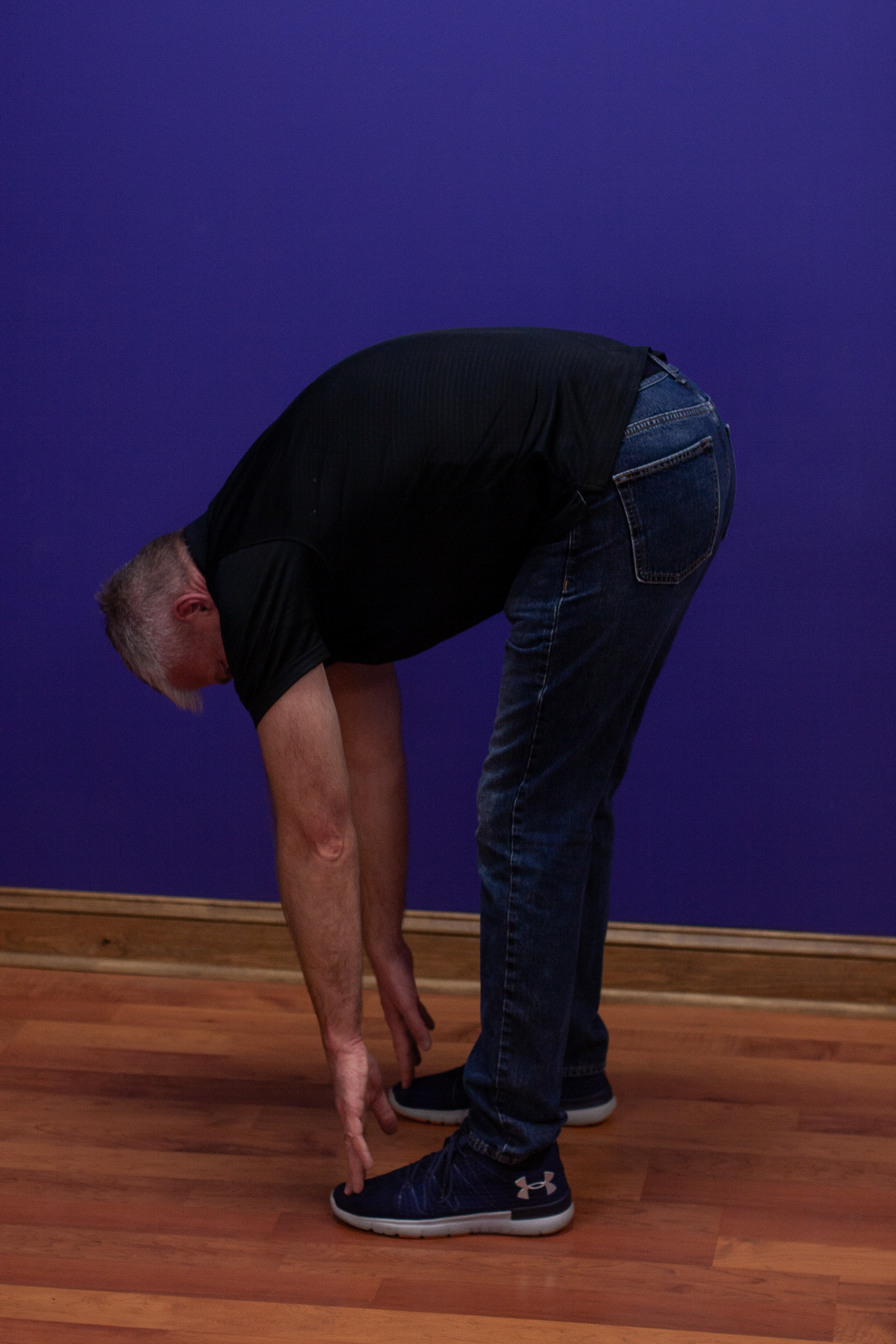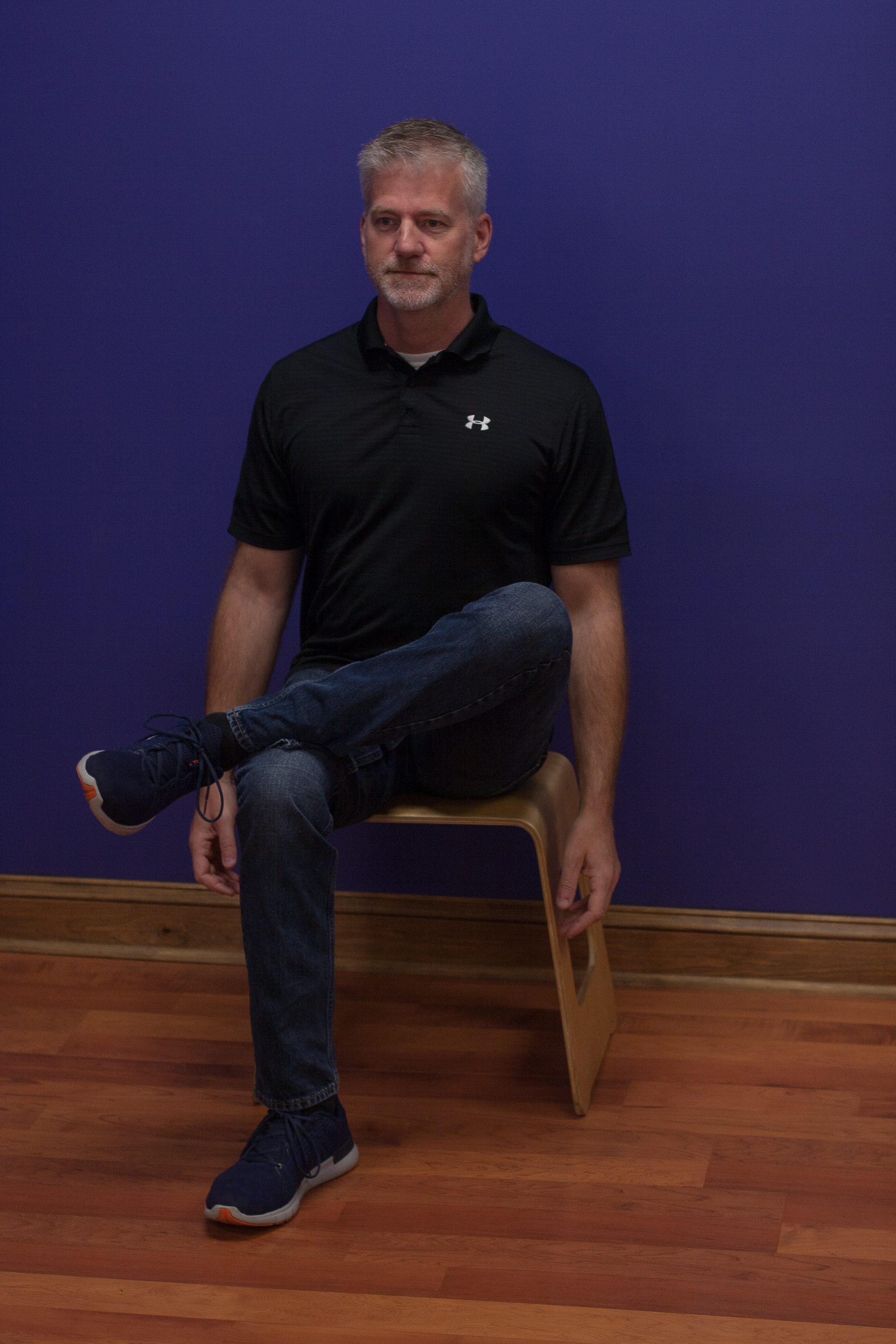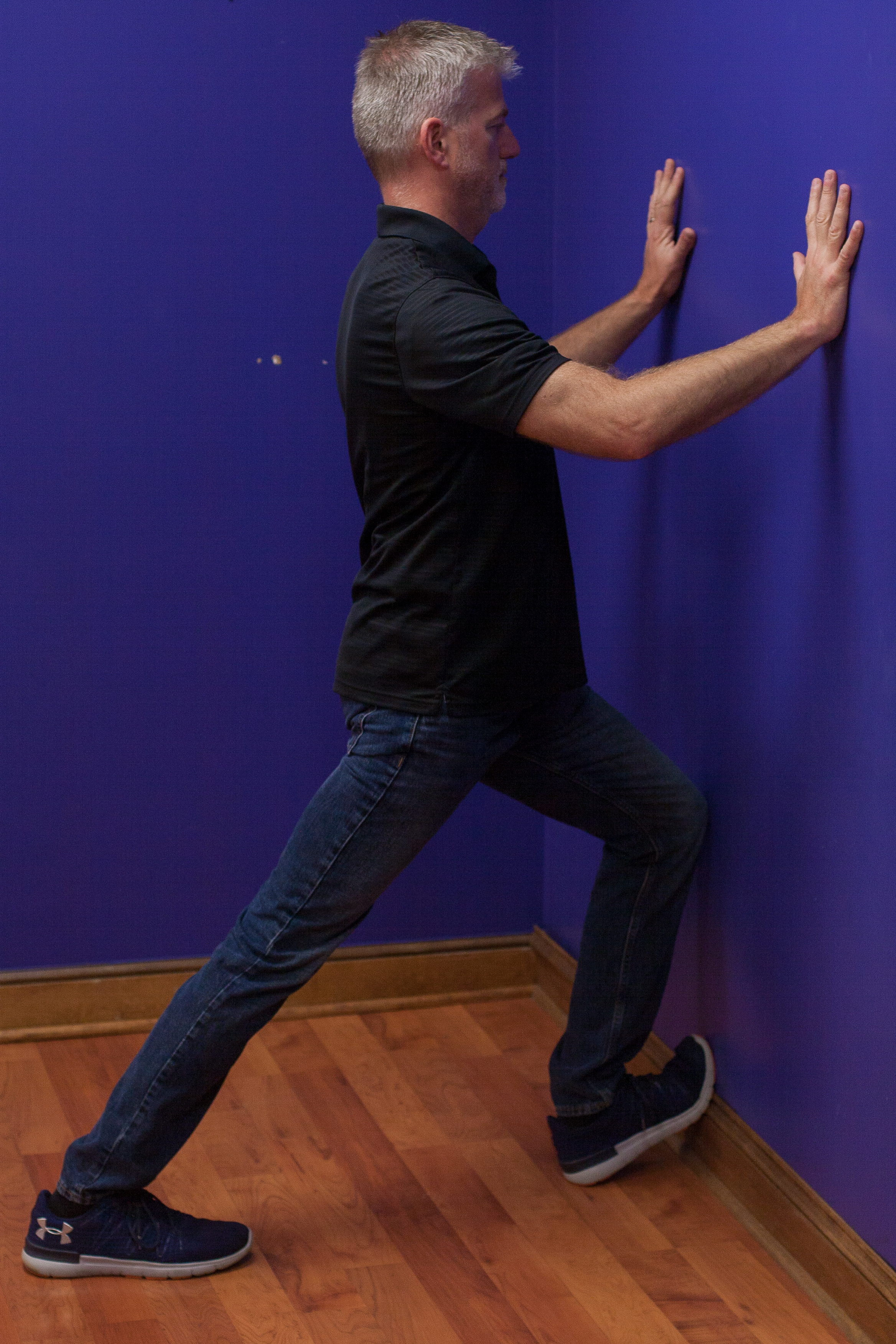Previous injuries and motion differences from left to right are the two main causes of future problems.
When an injury leaves you less than 100% recovered, or when one arm or leg can’t do what the other side can, you’re at risk for another injury even without pain.
1. WALL TEST: you should be able to stand with your heels, butt, shoulders and head (level) against a wall.
2. HAND TOUCH: you should be able to touch fingertips together behind your back.


3. TOE TOUCH: you should be able to touch fingertips to your toes with knees straight.
4. HEEL TO BUTT: you should be able to touch your heel to your butt, with your knees even.


5. SINGLE LEG STAND: you should be able to stand on one foot for 5 seconds without losing balance.
6. SITTING LEG CROSS: you should be able to cross one leg over the other, with the leg horizontal.


7. ANKLE TEST: you should be able to touch your knee to the wall, with your heels on the floor and the back leg straight. Start in the position shown in the image to the left, then move your knee forward until it hits the wall without moving your foot position.


Let me know how you did and reach out to me if you’d like to improve!
Click the buttons below to get in touch, or schedule a visit to our clinic in Orchard Park, NY.
Session expired
Please log in again. The login page will open in a new tab. After logging in you can close it and return to this page.
